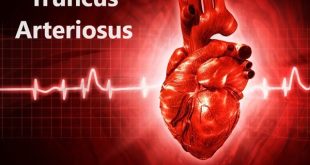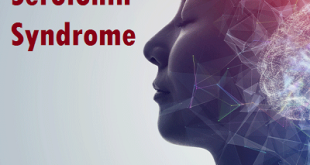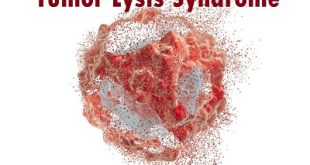What is Thunderclap Headache?
Thunderclap headache is a sudden and severe type of headache that strikes with an intense and explosive onset, akin to the abrupt crash of thunder. This type of headache is characterized by its rapid onset of excruciating pain that reaches its peak intensity within just a few seconds to a minute. The pain is often described as being unlike any other headache and is commonly experienced as a sharp, stabbing, or throbbing sensation. Thunderclap headaches can be incredibly distressing due to their sudden and severe nature, often prompting individuals to seek immediate medical attention.
These headaches can be indicative of underlying serious medical conditions such as subarachnoid hemorrhage (bleeding in the brain), cerebral artery dissection (a tear in the blood vessels of the brain), or other issues involving the blood vessels in the brain. Given the potential association with critical conditions, prompt medical evaluation is crucial for accurate diagnosis and timely intervention. Physicians may utilize various diagnostic techniques such as imaging scans, lumbar punctures, and neurological assessments to determine the cause of the thunderclap headache and ensure appropriate treatment is administered to address the underlying issue.
Types and additional triggers
Thunderclap headaches are a specific type of headache characterized by their sudden and severe onset. While thunderclap headaches themselves don’t have distinct “types,” they can be associated with various underlying causes or conditions that result in similar symptoms. Some of the common conditions that can lead to thunderclap headaches include:
- Subarachnoid Hemorrhage: This is one of the most serious causes of thunderclap headaches. It involves bleeding in the space between the brain and the surrounding tissues (subarachnoid space). Ruptured aneurysms, arteriovenous malformations (AVMs), and head trauma are among the potential causes of this condition.
- Cerebral Artery Dissection: This refers to a tear in the walls of an artery in the brain. This tear can lead to abnormal blood flow and can trigger sudden and severe headaches.
- Reversible Cerebral Vasoconstriction Syndrome (RCVS): RCVS is characterized by a sudden narrowing of the blood vessels in the brain. This can lead to severe headaches and sometimes even stroke-like symptoms.
- Cerebral Venous Sinus Thrombosis: This condition involves the formation of blood clots in the veins that drain blood from the brain. The resulting increased pressure can cause intense headaches.
- Migraine: While not typically associated with sudden and severe headaches, a subtype of migraine known as “migrainous thunderclap headache” can mimic the characteristics of a thunderclap headache. It’s essential to differentiate between the two to ensure proper diagnosis and treatment.
- Primary Thunderclap Headache: In some cases, no underlying cause can be identified for the thunderclap headache. This is termed a “primary thunderclap headache” and is diagnosed after other potential causes have been ruled out.
Given the potential seriousness of the conditions associated with thunderclap headaches, seeking prompt medical attention is crucial when experiencing such symptoms. A thorough evaluation by a healthcare professional is necessary to determine the underlying cause and provide appropriate treatment.
Epidemiology
A systematic literature review reported poor population-based data to accurately identify the true incidence and prevalence of thunderclap headaches. The authors determined that the only estimate of a population-based incidence is from the study of a subset of a Swedish population. The incidence is reportedly 43 per 100,000 inhabitants older than 18 years annually. A population-based study in Italy showed a 0.3% lifetime prevalence of TCH in men and women aged 55 to 94.
TCH in the pediatric population is considered very rare, but data are limited. In a recent retrospective study of children and adolescents aged 6 to 18 years presenting to a pediatric emergency department, TCH was diagnosed in 19 out of 2290 (0.8%) of the included patients. In patients presenting with a TCH, subarachnoid hemorrhage is found in 11 to 25% and other intracranial hemorrhages in 5 and 10%.
TCH is the presenting symptom in 20% of patients with cervical artery dissection, 2 to 16% with cerebral venous thrombosis, 15% with intracranial hypotension, and 2% with bacterial or viral meningitis. Reversible cerebral vasoconstriction syndrome (RCVS) is a group of disorders characterized by severe headaches and cerebral vasoconstriction. The most common symptom of RCVS is a sudden, intense, thunderclap headache. RCVS represents a multitude of pathologies, so the true incidence of thunderclap is unknown.
Pathophysiology
Once the cause of secondary thunderclap headaches (TCH) in a patient is identified, the underlying condition’s pathophysiology comes into play. However, in a broad sense, the pathophysiology of both primary and secondary TCH remains unclear. Research indicates that the sympathetic nervous system is centrally involved in the abnormal regulation of cerebrovascular tone, resulting in vasoconstriction and vasospasm, which ultimately triggers intense head pain.
Symptoms associated with thunderclap headache
Typical associated symptoms of a thunderclap headache.
If you’re experiencing a thunderclap headache, it’s also likely to experience:
- Nausea or vomiting
- Loss of consciousness or altered consciousness
- Facial drooping
- Weakness
- Neck stiffness or pain
- High blood pressure
- Seizures
- Fever
What are the causes of thunderclap headache
Thunderclap headaches could be caused by bleeding from an artery into the space surrounding your brain. This is known as a subarachnoid hemorrhage. Arteries are vessels that supply blood to your brain.
A thunderclap headache could also be caused by any of the following:
- Small tears in the arteries of your head or neck
- A burst artery or aneurysm, which is a swollen, weak area in the artery
- Blocked veins in your head
- Leaking spinal fluid
- Rapid changes in blood pressure
- An infection in your brain
- Head injury
- Hemorrhagic stroke (This comes from a ruptured blood vessel in your brain.)
- Ischemic stroke (This comes from a blocked blood vessel, due to a blood clot, or plaque.)
- Narrowed blood vessels surrounding the brain
- Inflamed blood vessels
- Extremely high blood pressure in late pregnancy
Some activities such as the following could trigger a thunderclap headache:
- Hard physical labor
- Taking certain drugs, including illegal ones
- Hitting warm or hot water too fast, such as when you first enter a shower or bath
Complications of Thunderclap Headache
Various complications may arise depending on the underlying cause of a thunderclap headache.
For instance, people with a subarachnoid hemorrhage typically stay in the intensive care unit (ICU) for several days or weeks to stabilize and be monitored for complications.
Possible complications of a subarachnoid hemorrhage include:
- Rebleeding
- Vasospasm (when arteries in the brain rapidly spasm and narrow, possibly leading to stroke)
- Elevated intracranial pressure (increased pressure in the skull)
- Low sodium levels (hyponatremia)
Examples of possible complications for other conditions include:
Reversible cerebral vasoconstriction syndrome: Most people have a favorable outcome, although stroke leading to death occurs in up to 2% of cases. Also, more than 50% of individuals with RCVS develop mild or moderate chronic headaches. Long-term anxiety and depression are also common.
Stroke: Depending on the location and severity of the stroke, various brain-related problems may occur, such as problems speaking, moving, thinking, or swallowing. Depression after a stroke is also common.
Risk factors of thunderclap headache
The risk factors for thunderclap headaches include:
- Age: Older age increases the risk
- Gender: Women are more vulnerable to certain types
- Health History: Previous migraines, high blood pressure, or prior thunderclap headaches raise risk
- Smoking: Smoking can contribute
- Substances: Using certain drugs can trigger it
- Family History: If family members had aneurysms or neurological issues
- Medical Conditions: Conditions like autoimmune disorders or clotting problems are linked
- Medications: Certain drugs can lead to thunderclap headaches
- Physical Strain: Strenuous activity, including sexual activity, can be a trigger
- Prior Brain Interventions: Past brain surgeries or procedures might elevate risk
Remember, thunderclap headaches are uncommon but serious. If someone experiences a sudden and severe headache, especially the worst they’ve ever had, they should seek immediate medical help.
Diagnosis
The following tests are commonly used to try to determine the cause of a thunderclap headache.
- CT scan of the head. CT scans take X-rays that create slice-like, cross-sectional images of your brain and head. A computer combines these images to create a full picture of your brain. Sometimes an iodine-based dye is used to augment the picture.
- Spinal tap (lumbar puncture). The doctor removes a small amount of the fluid that surrounds your brain and spinal cord. The cerebrospinal fluid sample can be tested for signs of bleeding or infection.
- MRI. In some cases, this imaging study might be done for further assessment. A magnetic field and radio waves are used to create cross-sectional images of the structures within your brain.
- Magnetic resonance angiography. MRI machines can be used to map the blood flow inside your brain in a test called a magnetic resonance angiography (MRA).
Treatment
The treatment for thunderclap headaches depends on their underlying cause. Since thunderclap headaches can be a symptom of various serious conditions, it’s crucial to identify and address the specific cause.
General approaches for treating thunderclap headaches
Immediate Medical Attention: Given the potential seriousness of thunderclap headaches, seeking emergency medical care is essential.
Diagnostic Tests: Doctors will conduct imaging scans (such as CT scans or MRIs) to determine the cause of the headache and the extent of any potential bleeding or abnormalities.
Pain Management: Depending on the severity of the headache, pain relief medications may be given. However, these medications won’t address the underlying cause.
Lifestyle Changes: If risk factors like smoking or certain medications are contributing, making necessary lifestyle changes can help prevent future episodes.
Monitoring and Follow-up: After acute treatment, close monitoring and follow-up with healthcare providers are crucial to ensure the condition is managed effectively.
Medical Interventions
Treatment might involve addressing the specific condition causing the thunderclap headache:
Subarachnoid Hemorrhage (SAH): Surgical procedures or endovascular techniques might be necessary to stop the bleeding.
Cerebral Venous Sinus Thrombosis (CVST): Blood-thinning medications can be used to dissolve the clot.
Reversible Cerebral Vasoconstriction Syndrome (RCVS): Treatment aims to manage symptoms and alleviate vasoconstriction using medications to relax blood vessels.
Ischemic Stroke: Depending on the cause, medications or procedures to restore blood flow might be used.
Other Conditions: Treatment will vary based on the specific diagnosis.
Remember, the treatment approach will depend on the individual’s medical history, the underlying cause of the thunderclap headache, and the severity of the condition. Since timely treatment can significantly affect outcomes, seeking prompt medical attention is of utmost importance.
Prevention
Preventing thunderclap headaches involves addressing underlying risk factors and adopting a healthy lifestyle. While some triggers are unavoidable, you can take steps to minimize the likelihood of experiencing these sudden and severe headaches:
Lifestyle and Health Measures
Manage Blood Pressure: Keep your blood pressure in check to prevent vascular issues that can trigger thunderclap headaches.
Quit Smoking: Say goodbye to smoking to lower the risk of vascular problems that can lead to intense headaches.
Healthy Diet: A balanced diet filled with fruits, vegetables, whole grains, lean proteins, and healthy fats supports overall cardiovascular health.
Stay Hydrated: Drink enough water throughout the day to fend off dehydration, which can contribute to headaches.
Regular Exercise: Engaging in physical activity improves blood circulation and helps maintain a healthy weight, reducing headache risk.
Stress Management and Triggers
Manage Stress: Practice relaxation techniques like deep breathing, meditation, or yoga to keep stress-related headaches at bay.
Limit Alcohol and Caffeine: Moderate alcohol and caffeine consumption since excess can trigger headaches for some individuals.
Safe Medication Use: Use pain medications as recommended by your doctor to avoid rebound headaches.
Identify Triggers: Pinpoint and manage specific triggers, like certain foods or activities, that could lead to thunderclap headaches.
Health Monitoring and Prevention
Regular Check-ups: Scheduled health check-ups allow monitoring and early intervention for potential concerns.
Treat Underlying Conditions: Effectively manage existing medical conditions that increase the risk of thunderclap headaches.
Know Your Family History: Being aware of family medical history helps you understand potential risks and take preventive measures.
Safety and Medical Guidance
Safe Sexual Activity: If sexual activity has triggered headaches before, discuss concerns with a doctor for safety measures.
Balance Work and Rest: Maintain a healthy work-life balance to prevent stress and fatigue, which can contribute to headaches.
Follow Medical Advice: If you’ve experienced thunderclap headaches before, adhere to doctor’s recommendations and attend regular follow-up appointments.
 Diseases Treatments Dictionary This is complete solution to read all diseases treatments Which covers Prevention, Causes, Symptoms, Medical Terms, Drugs, Prescription, Natural Remedies with cures and Treatments. Most of the common diseases were listed in names, split with categories.
Diseases Treatments Dictionary This is complete solution to read all diseases treatments Which covers Prevention, Causes, Symptoms, Medical Terms, Drugs, Prescription, Natural Remedies with cures and Treatments. Most of the common diseases were listed in names, split with categories.







